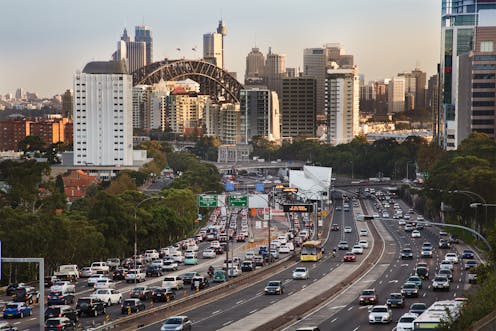Will a continuing education divide eventually favour Labor electorally due to our big cities?
- Written by The Conversation

In May, I wrote that white voters without a university education were increasingly voting for right-wing parties in Australia, the US and the UK.
However, in Australia, this trend is most apparent in regional electorates such as Capricornia in Queensland.
Read more: Non-university educated white people are deserting left-leaning parties. How can they get them back?
At the 2019 federal election, Labor had no trouble retaining traditional urban heartland seats, such as Scullin in Melbourne, Blaxland in Sydney and Spence in Adelaide – as ABC election analyst Antony Green’s pendulum shows.
It’s possible non-uni whites in big cities such as Melbourne and Sydney have not swung right like those in regional areas owing to more cultural assimilation in cities. Associating with other ethnic groups may mean non-uni whites in cities are less persuaded by anti-immigrant rhetoric than those in regional areas.
Currently, non-uni whites, especially in regional areas, are trending to right-wing parties, while university-educated people are trending to the left. A key question is whether these trends will continue. It’s possible high inflation could reverse this trend among non-uni whites in countries that currently have right-wing governments.
If the trends to the right with regional non-uni whites continue, but urban non-uni whites are not moved, and university-educated voters trend left, then the percentage of the population living in cities becomes important.
I have calculated an urbanisation percentage for four countries based on lists of cities by population. I have used 100,000 people as the minimum required for a city.
In the US, a total of over 97 million people lived in cities with over 100,000 population at the 2020 Census, but the total US population was over 331 million. That’s an urban percentage of just 29% for the US.
In the UK in 2021, 29.8 million people lived in cities with over 100,000 population, while the UK’s total population was 68.4 million people. That’s an urban percentage of 44%.
In Canada, 20.9 million people lived in cities with over 100,000 population at the 2016 Census, with a total Canadian population of 35.2 million people. That’s an urban percentage of 60%.
In Australia, 16.0 million people lived in cities with over 100,000 population at the 2016 Census. I have omitted Central Coast and Sunshine Coast from the population centres as they are not single cities. Australia’s population at the 2016 Census was 23.4 million, so 68% of Australians lived in urban areas.
You can see the large numbers of urban electorates in Australia compared to regional seats on the electoral maps article.
Read more: Where are the most marginal seats, and who might win them?
At the September 2021 Canadian federal election that used first past the post, the centre-left Liberals won 160 of the 338 seats, the Conservatives 119, the left-wing separatist Quebec Bloc 32, the left-wing New Democrats (NDP) 25 and the Greens two.
The Liberals won 41 more seats than the Conservatives despite losing the national popular vote by 1.1% (Conservatives 33.7%, Liberals 32.6%, NDP 17.8%, Bloc 7.6%). The Bloc ran only in Quebec.
The Liberals easily won the most seats by completely dominating major Canadian cities such as Toronto and Montreal, and also by winning seats in Edmonton and Calgary in the Conservative province of Alberta. You can see this in the CBC results map at the above link.
As Australia is more urbanised than Canada, Labor would win elections easily if they dominated our five mainland capital cities to the extent the Liberals do in Toronto and Montreal in Canada.
To become dominant in cities in the way Canada’s Liberals are, Labor would need to gain the high income seats in Melbourne’s inner east and Sydney’s north shore, which have long been seen as Liberal heartland. If polarisation along education lines becomes greater, this will eventually occur - but not necessarily at the upcoming election.
However, some of those seats are facing a genuine challenge from “teal” independents. Is it in Labor’s best interests for independents to win these seats? Once independents are established as sitting members, they are difficult to dislodge.
If Labor can defeat the Liberals in these seats in the future, it would be frustrating for Labor to have independents occupying them; Labor would prefer its own candidates be elected.
There is evidence Labor has indeed gained with high income voters. In the March quarter Newspoll breakdowns, Labor held a 55-45 lead among those on $150,000 or more income per year, up from a 53-47 deficit in the December quarter.
But maybe inflation will reverse the Coalition’s gains among non-uni whites, and the current level of education polarisation could stabilise or reduce.
While this exercise could lead to left dominance in Australia, the same logic implies that the right will dominate future elections in the US, where just 29% live in cities of over 100,000 population.
But in the US, many high income people live in “suburbs” outside cities, and swings to Democrats in the suburbs were responsible for Joe Biden’s narrow victory in 2020, and the Democrats’ decisive midterm victory in 2018.
UK Labour already has difficulties owing to the first-past-the-post system, which will probably be increased by the UK’s population demographics.







